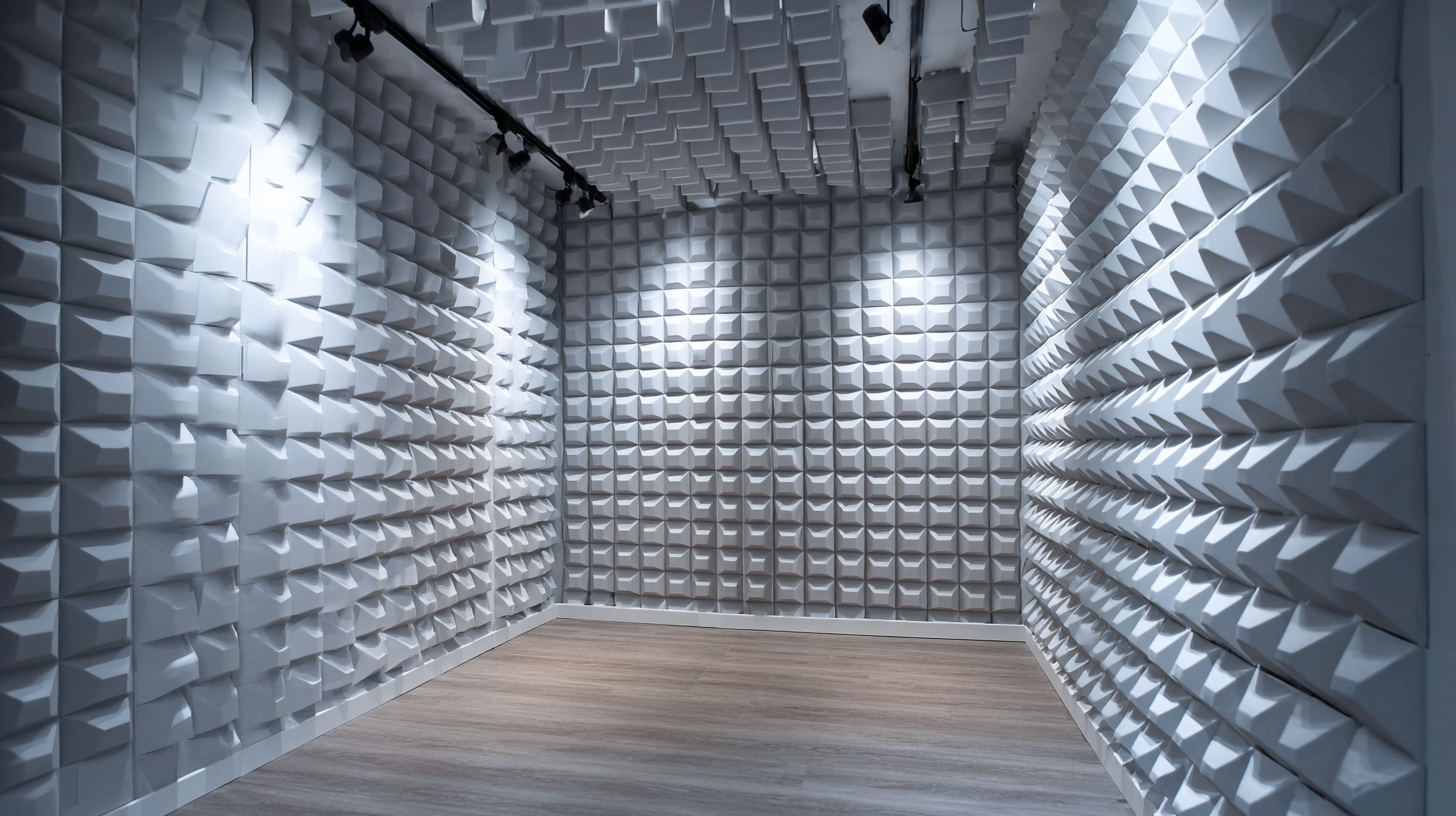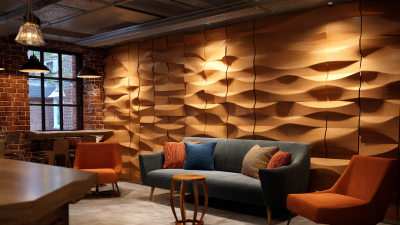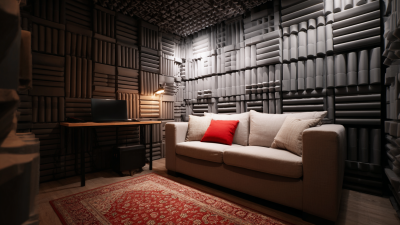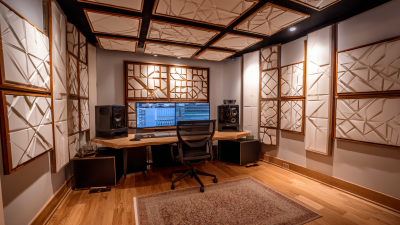Why Acoustic Wall Panels Are Essential for Enhancing Sound Quality in Your Space
In the quest for optimal sound quality within various environments—be it a professional studio, a bustling office, or a cozy home—the importance of **Acoustic Wall Panels** cannot be overstated. According to renowned acoustics expert Dr. Emma Johnson, “The right acoustic treatment drastically improves auditory experiences and enhances the clarity of sound in any given space.” With increasing awareness of how sound affects our daily lives, the demand for effective soundproofing solutions has surged.
Acoustic Wall Panels serve as a transformative solution, significantly reducing unwanted noise and echo while enhancing the overall auditory atmosphere. Whether you are looking to create a serene workspace, a lively restaurant, or a high-fidelity music room, the right panels can make all the difference. This article will explore the top five reasons why incorporating **Acoustic Wall Panels** is essential for achieving superior sound quality, ultimately leading to more enjoyable and productive environments. These panels not only contribute to acoustic comfort but also add an element of aesthetic appeal to your space, blending functionality with design.

Importance of Acoustic Wall Panels in Modern Interiors
Acoustic wall panels play a pivotal role in modern interiors, transforming spaces from ordinary to extraordinary while significantly enhancing sound quality. In environments such as offices, studios, and home theaters, these panels are designed to absorb sound waves, reducing echo and reverberation. This not only improves the auditory experience but also creates a more comfortable atmosphere for conversation and collaboration. As the demand for multifunctional spaces rises, embracing acoustic treatments becomes vital for optimizing sound dynamics in bustling environments.
Incorporating acoustic wall panels also aligns with contemporary design principles, merging functionality with aesthetics. Available in a variety of materials, colors, and textures, these panels can complement any interior decor while addressing acoustic needs effectively. The versatility of acoustic wall panels means they can be seamlessly integrated into residential and commercial settings, ensuring that sound quality is not compromised for style. As modern spaces become more dynamic and focused on enhancing user experience, the importance of acoustic wall panels cannot be overstated, making them essential in today's architectural landscape.
Importance of Acoustic Wall Panels in Modern Interiors
Acoustic wall panels are crucial in modern interiors for improving sound quality. The chart above highlights their importance across various dimensions, including sound absorption, noise reduction, design flexibility, cost efficiency, and durability.
Key Benefits of Acoustic Panels for Improving Sound Clarity
Acoustic wall panels play a crucial role in enhancing sound quality by absorbing unwanted noise and reducing echo in any given space. These panels are particularly beneficial in environments such as offices, recording studios, and home theaters, where sound clarity is paramount. By effectively absorbing sound waves, they help create a more pleasant auditory experience, allowing speech and music to be heard more clearly.
When considering the installation of acoustic panels, it's essential to choose the right materials and designs that complement your space. For instance, fabric-wrapped panels not only provide effective sound absorption but also add a decorative element to your walls. To maximize the benefits, aim to place the panels strategically where sound reflections are most problematic, such as near speakers or along walls opposite reflective surfaces.
**Tips:** Experiment with panel placement to find the optimal configuration for your space. Don't hesitate to mix and match different panel styles and colors to enhance both sound quality and aesthetic appeal. Additionally, consider acoustic tiles or foam if you're looking for a budget-friendly option that still delivers great results.

Choosing the Right Materials for Effective Sound Absorption
When considering sound absorption in any environment, the choice of materials is crucial. Acoustic wall panels can be made from various materials, each contributing differently to sound management. For instance, materials like cellulose acetate and composites derived from natural fibers, such as luffa, have proven effective in reducing noise pollution while being eco-friendly. These innovative options align well with contemporary desires for sustainability in design, ensuring that while spaces become quieter, they also remain environmentally conscious.
Additionally, newer technologies in sound-absorbing materials, like those utilizing discarded feathers, highlight the potential for unique solutions in architectural acoustics. Such materials not only enhance sound quality but also repurpose waste, setting a precedent for eco-efficient design. Understanding the properties of these materials and making informed choices based on their acoustic performance can dramatically improve the ambiance and functionality of any space, ensuring comfort and well-being for its occupants.
Creative Design Ideas for Integrating Acoustic Panels
Acoustic wall panels are not only functional but also offer a canvas for creative design in contemporary spaces. As the global acoustic panel market is projected to reach USD 13.5 billion by 2034, with a compound annual growth rate (CAGR) of 6.8% from 2025 to 2034, the integration of these panels into interior design has become increasingly innovative. Designers are now exploring sustainable materials, such as acoustic wood panels that merge craftsmanship with eco-friendly practices, catering to the rising demand for personalized and sustainable environments.
In urban settings, where noise pollution poses significant challenges, innovative sound solutions are crucial for enhancing the quality of life. For instance, urban centers are adapting by incorporating acoustic panels that improve sound clarity and control, especially in multi-functional spaces like offices and public venues. The creative use of these panels in unique designs not only optimizes acoustic performance but also adds aesthetic value, allowing spaces to serve dual functional purposes—balancing noise mitigation with eye-catching decor. This thoughtful integration reflects the evolving landscape of interior design, where the focus is equally on practicality and style.

Cost-Effective Solutions for Enhancing Space Acoustics
Acoustic wall panels have emerged as a cost-effective solution for enhancing space acoustics, making them indispensable in various environments, from offices to educational institutions. According to a report by the National Institute of Health, proper acoustic treatment can significantly reduce background noise levels by up to 75%. This reduction not only improves communication but also enhances concentration and overall productivity. With the rising awareness of noise pollution's impact on well-being, investing in acoustic panels is becoming increasingly essential.
When selecting acoustic wall panels, consider materials that provide optimal sound absorption. Fiberglass and foam panels are highly effective, as they can absorb high-frequency sounds that often contribute to noise distraction. Furthermore, installing these panels strategically—such as on walls opposite to sound sources—can yield maximum results.
**Tips:** Ensure that the panels match your interior decor to maintain aesthetic appeal. Additionally, consider DIY installation options to save on labor costs, as many modern acoustic panels come with user-friendly adhesives. Regularly assess your space's acoustics and adjust panel placement to adapt to changes in your environment.
Why Acoustic Wall Panels Are Essential for Enhancing Sound Quality in Your Space
| Aspect | Details |
|---|---|
| Material Types | Foam, Fabric, Wood, Metal, Mineral Wool |
| Applications | Home Theaters, Music Studios, Offices, Restaurants, Auditoriums |
| Benefits | Improved Sound Clarity, Reduced Echo, Enhanced Privacy, Better Concentration |
| Cost Range | $30 - $120 per panel |
| Installation Options | DIY, Professional Installation |
| Sustainability | Recyclable Materials, Low VOC Options |
Related Posts
-

Transform Your Space with Stylish Acoustic Wall Panels: A Comprehensive Guide for UK Homeowners
-

Transform Your Space: The Surprising Benefits of Acoustic Ceiling Tiles Explained
-

Discover the Science Behind Sound Proof Panels: How They Transform Your Space into a Quiet Oasis
-

Exploring the Science Behind Soundproof Rooms: Key Noise Reduction Techniques and Benefits for Homeowners
-

How Sound Dampening Improves Home Comfort and Productivity
-

Understanding the Benefits of Sound Dampening Panels for a Quieter Home Environment

